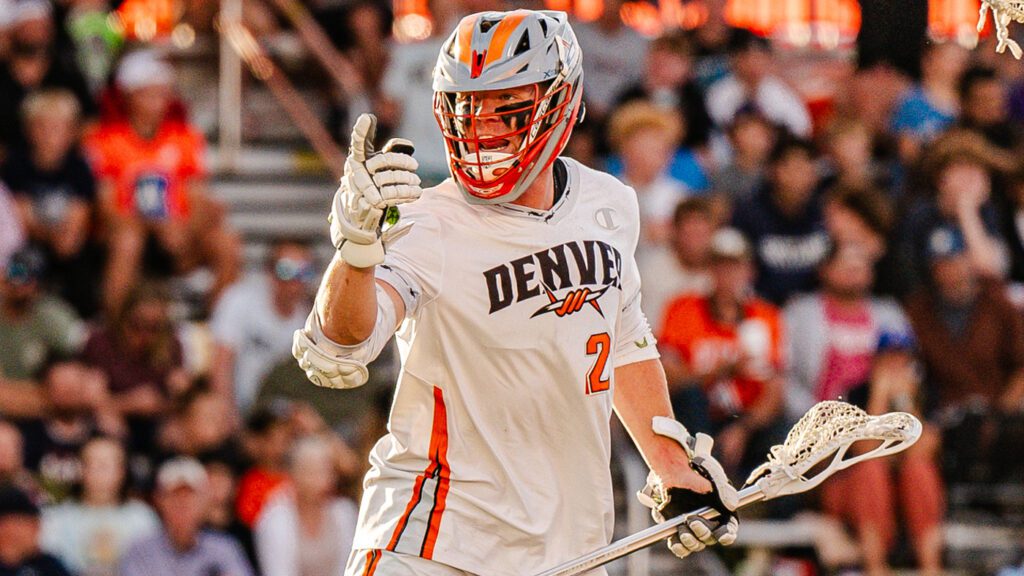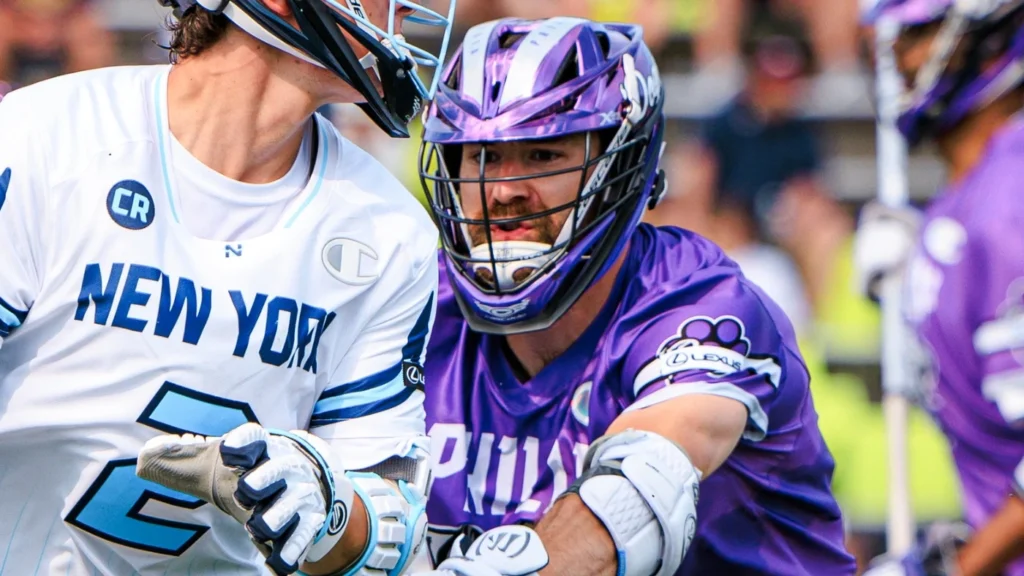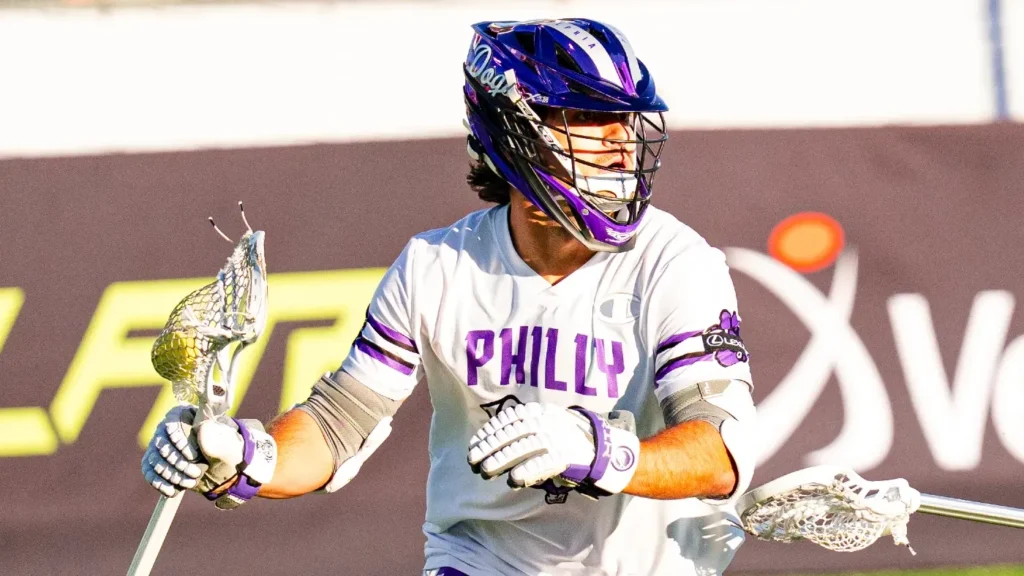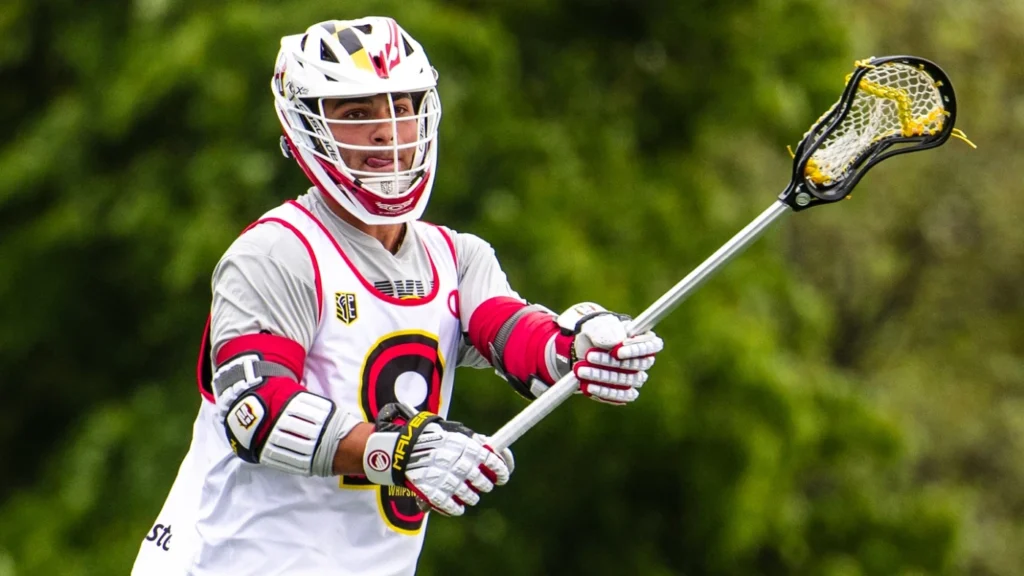
Justin Anderson is the perfect fit for the Denver Outlaws offense
By Topher Adams | Aug 20, 2024
Justin Anderson is the heartbeat of the Denver Outlaws. The first-year captain is a leader in the locker room and one of the few veteran voices on a super young offensive group. He’s played all across the midfield to help the team whenever possible.
For all that Anderson does as a leader and with his presence off the field, it’s easy to overlook his tangible results on the field. But you shouldn’t.
Despite playing a two-way role at times this season, Anderson is still one of Denver’s top offensive weapons. He finished the regular season third on the team in points with 19, tied for second in goals with 11 and tied for third in assists with six.
The biggest strength of Anderson’s game is his consistency. On a team where young players ride waves of inconsistency from week to week, Anderson has been a constant. He scored in eight out of 10 games and had at least one point in nine.
He’s the perfect fit in the Outlaws offense because he does the stuff nobody else in the midfield does.
Sam Handley is a bruiser, Graham Bundy Jr. is a long-range shooter and Dalton Young is a shifty converted attackman. Anderson is a true slasher. His dodges are extremely direct, and he rarely settles for long-range shots.
He's a direct dodger who either gets to the goal or moves the ball down low. In a midfield with Graham Bundy and Sam Handley shooting from range, Anderson's downhill ability is necessary. pic.twitter.com/zo7zcAm3ps
— Topher Adams (@Topher_Adams) August 20, 2024
While Handley and Bundy use their range to fire early in a dodge, Anderson fights to get to the crease. That directness adds a different element to the offense, and it opens spaces up high for shooters if the ball swings back around.
When Denver wants to start a settled set with a dodge down the alley that leads to a passing sequence, it’s usually Anderson who starts those actions.
He's excellent at starting the offense and playing within it. More than just about any other Outlaw, he dodges to start the offense. And sometimes the ball finds its way back to him. pic.twitter.com/1bxLjzFobK
— Topher Adams (@Topher_Adams) August 20, 2024
And even if he’s not a shooting specialist like Bundy, Anderson has enough range to keep defenses honest. He can punish slides with a step-down or force defenses to close out, allowing him to attack downhill.
The Outlaws have changed Anderson’s usage over the course of the season. At the start of the year, he was a true two-way midfielder. He played a ton of short-stick defensive midfielder and got limited reps in settled offensive sets.
To his credit, he’s effective in that role and works hard to contribute on both ends. However, his dodging, goal-scoring and leadership were badly missed on the offense. Over the last four games of the season, playing mostly on offense now, Anderson had 11 points.
But one aspect of his early-season two-way role is still a big part of Denver’s offense: his play on faceoff wings. While Anderson doesn’t run many short-stick shifts, he does run a ton of faceoff wings, and he can do a lot of damage off of them.
It starts with his ability off the ground. Anderson is third on the team in ground balls with 21, and his tenacity and speed allow him to win loose balls. That then allows the Outlaws to push in early offense.
Having Anderson on the wings allows Denver to attack with urgency off of wins instead of wasting time on the 32-second shot clock. When Luke Wierman gets on a roll at the stripe, Anderson on the wing becomes a dangerous weapon.
While he's back playing offense, he's still taking faceoff wings. He's good off the ground (21 GBs) and if Luke Wierman can get on a roll, there's room for instant offense. pic.twitter.com/xujyO8zoux
— Topher Adams (@Topher_Adams) August 20, 2024
Balance and consistency are the keys to Denver’s offense. When the ball moves and everyone is getting involved, the team flows. Anderson’s contributions are a huge part of that balance. He moves the ball, attacks aggressively and efficiently converts chances.
Heading into their quarterfinal matchup against the Maryland Whipsnakes, the Outlaws can count on Anderson to contribute and set the baseline for the offense when it matters most.







